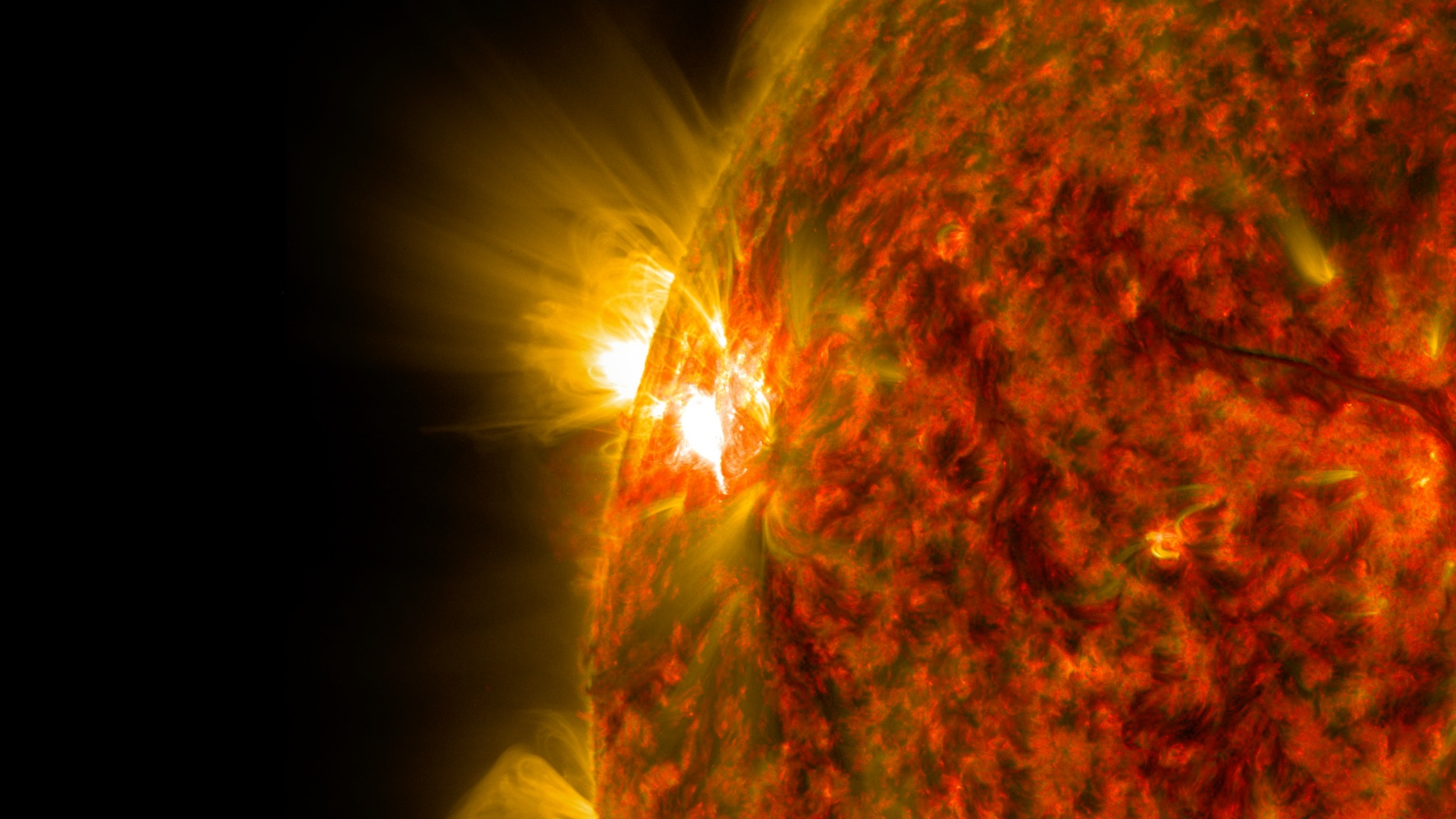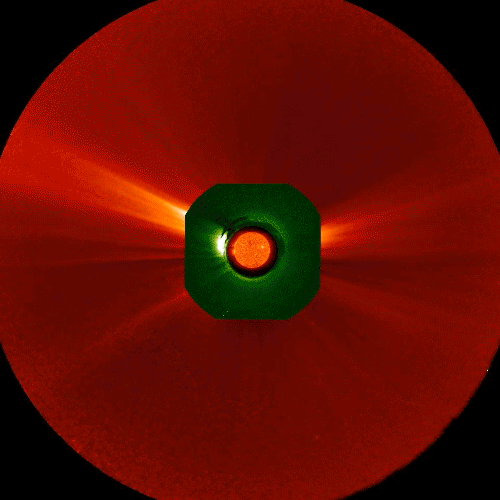
The Sun Is Literally Boiling, Releasing Balls of 'Hot Horror' Into Space

Paul Sutter is an astrophysicist at The Ohio State University and the chief scientist at COSI Science Center. Sutter leads science-themed tours around the world at AstroTouring.com.
Here it comes: Tomorrow (Aug. 21), a total solar eclipse will cross the United States from Oregon to South Carolina.
Although everyone in the U.S. will get to enjoy at least a partial eclipse (assuming there are no clouds blocking the sun), anyone within the roughly 70-mile-wide (113 kilometers) strip of totality will get to see an unusual site: As the moon completely covers the sun, the midafternoon sky will plunge into darkness, and the moon itself will be encased in a dancing ring of fire: the solar corona, the thin but tremendous atmosphere of the sun.
That corona is intimately tied to the sun's agitation level. You see, despite its placid appearance in our sky — an unfailing source of warmth and light — the sun is actually a roiling, boiling, frenzied inferno of extreme forces and energies. [What You'll See During the 2017 Total Solar Eclipse]
I'm not just using the word "boiling" as a creative metaphor. The sun is literally boiling. The sun is hot on the inside (the nuclear fusion core) and relatively cold on the outside (where it meets the vacuum of space). To transfer all the heat from the inside to the outside, the sun convects, meaning plumes of material near the core heat up, expand and buoyantly rise to the surface, where they cool, condense and slink back down to the depths.
Sitting atop this boiling cauldron are the sunspots — gaping wounds in the sun where invisible twisted ropes of magnetic fields puncture the surface. Occasionally, these magnetic fields over-tangle to the point of breaking, releasing tremendous amounts of energy in furious outbursts.
That energy rips plasma material straight out of the sun itself; its very guts get hurled into space. Most of the time, these "prominences" die back down, settling back onto the surface with no one the wiser.
Get the Space.com Newsletter
Breaking space news, the latest updates on rocket launches, skywatching events and more!

But with sufficient energy, the material can completely separate from the sun and fling across the solar system. A massive ball of charged particles, with their attendant scrambled electric magnetic fields, get ready to sweep over unsuspecting targets.
So-called coronal mass ejections are usually harmless, because space is big and the Earth is small (relatively). However, sometimes, these horror balls cross our path and really mess up our afternoon plans. When they do, satellites are forced to go into low-power safe mode, as the ensuing electromagnetic storm is hard on delicate circuits, and astronauts have to avoid spacewalks.
On Earth's surface, we're protected by the planet's magnetic field, which funnels the charged particles into Earth's poles, giving us spectacular aurora light shows. But even then, those aren't the strongest possible storms. Severe ones can penetrate Earth's defensive force field, damaging our everyday electronics.
Thankfully, we haven't had a powerful blast like that since the mid-1800s. And double-thankfully, NASA has a network of satellites and telescopes, like the Solar Dynamics Observatory, that keep a careful eye on the sun and forecast the solar weather in our neck of the woods.
Editor's note: Visit Space.com for a live solar eclipse webcast Monday, courtesy of NASA, beginning at 12 p.m. EDT (1600 GMT).
Follow Paul @PaulMattSutter and facebook.com/PaulMattSutter. Follow us @Spacedotcom, Facebook and Google+. Original article on Space.com.
Join our Space Forums to keep talking space on the latest missions, night sky and more! And if you have a news tip, correction or comment, let us know at: community@space.com.

Paul M. Sutter is an astrophysicist at SUNY Stony Brook and the Flatiron Institute in New York City. Paul received his PhD in Physics from the University of Illinois at Urbana-Champaign in 2011, and spent three years at the Paris Institute of Astrophysics, followed by a research fellowship in Trieste, Italy, His research focuses on many diverse topics, from the emptiest regions of the universe to the earliest moments of the Big Bang to the hunt for the first stars. As an "Agent to the Stars," Paul has passionately engaged the public in science outreach for several years. He is the host of the popular "Ask a Spaceman!" podcast, author of "Your Place in the Universe" and "How to Die in Space" and he frequently appears on TV — including on The Weather Channel, for which he serves as Official Space Specialist.









